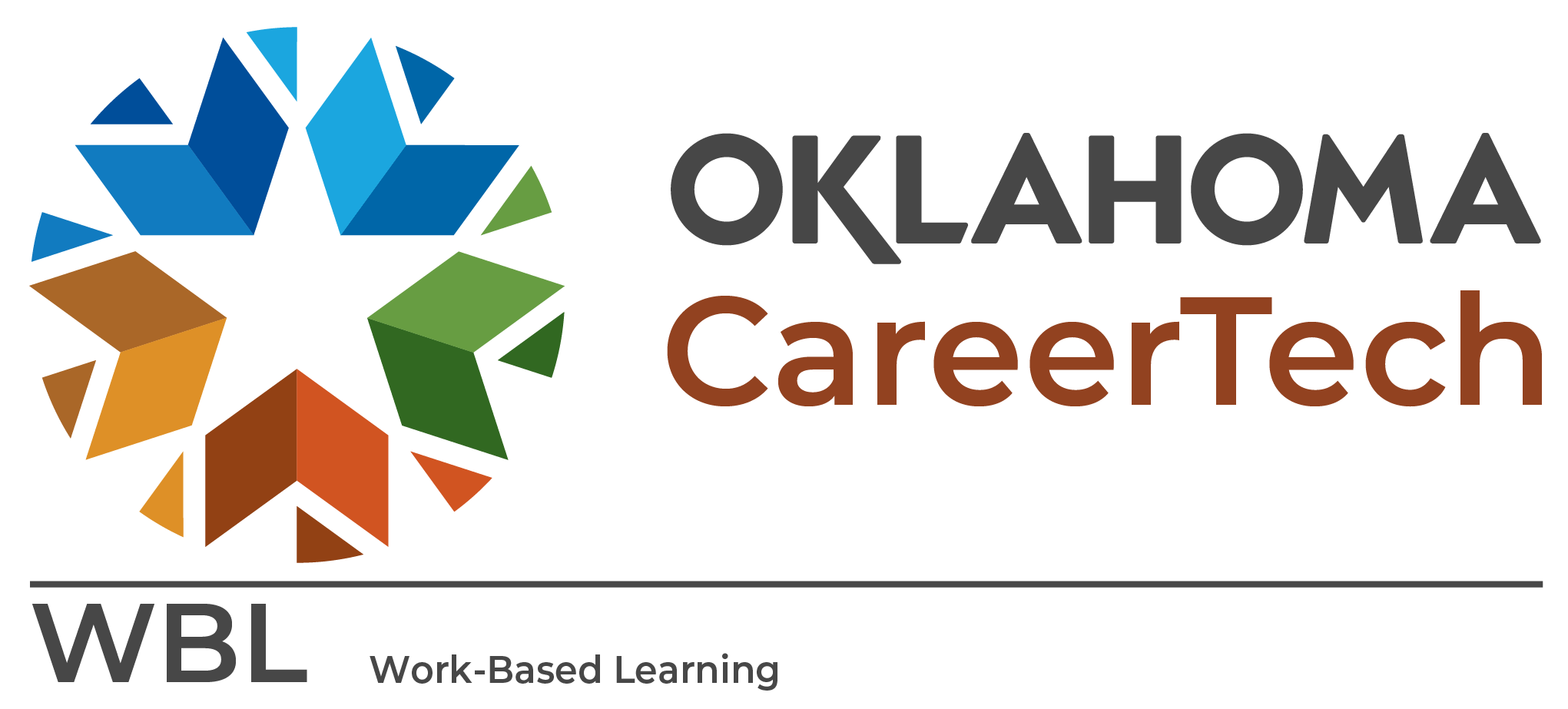Job Shadows


Overview
What Are Job Shadows?
Job shadows are career exploration activities that place individual students in workplaces to interact with and observe one or more employees. (In this chapter, “employer” refers to the workplace representative who decides whether to offer job shadow opportunities to students. “Employee” refers to the person in the workplace who hosts the student. In small organizations, these may be the same person.) Based on students’ interests in specific careers and/or employers, job shadows can help students learn more about the nature of jobs and work environments, as well as the education and training required to enter them.
Job shadows are sometimes the first opportunities for students to observe workplaces and have one-on-one interactions with employees, allowing for more in-depth exposure to both careers and work environments.
Job shadows are sometimes the first opportunities for students to observe workplaces and have one-on-one interactions with employees, allowing for more in-depth exposure to both careers and work environments. Students benefit most from participating in several job-shadowing opportunities, because they are able to compare and contrast the careers and workplaces that are of interest to them.
Students’ primary roles during a job shadow experience are:
- Identify job shadow opportunities that interest them.
- Interact with employees.
- Record observations of careers and workplaces.
- Reflect on their experiences.
Which Students Participate in Job Shadows?
Job shadow experiences are typically made available to students in 10th through 12th grades who have already participated in some career awareness and exploration activities. As with other WBL activities, the content and expectations for job shadows should reflect each student’s need for additional information about specific careers.
How Are Job Shadows Structured?
Typically lasting between four and eight hours, job shadows are individual student activities. While each job shadow should be tailored to the specific employee and student, a sample agenda for a job shadow would include:
- Introductions, welcome, overview of the industry and the employer: 30 minutes
- Workplace tour: up to 30 minutes
- Individual shadowing time (including informational interview): 2 – 6 hours
- Wrap-up/reflections meeting: 1 hour
Occasionally, job shadows are organized so that students spend part of their time with two or more different employees. If more than one employee is available, a rotational job shadow allows students to gather information about multiple careers or experience multiple perspectives on the same workplace or career.
Based on local needs and context, job shadow experiences may be offered to a group of students on a limited number of days or to individual students throughout the school year. Transportation and other logistics may vary depending upon the number of students and the schedule of job shadow visits.

How to Implement Job Shadows
Successful job shadowing experiences require collaboration, communication, and preparation by several stakeholders. The planning process involves preparing students to get the most from the experience, helping host employees communicate effectively with students, and providing positive experiences for students and the host organization.

The work entailed in organizing job shadows can extend over several months. As noted in the Introduction, the following implementation steps should be followed.
- Identify the stakeholders needed to assist with implementation. Typically, these will be district or school staff and representatives of employers and/or employer associations.
- Secure agreement from school administrators and teachers to assist in planning job shadows. Solicit their preferences for scheduling and for how the students will be selected.
- Collect information on students’ career interests. This may be done by teachers, counselors, or career advisors.
- Based on students’ interests, identify employers to ask to host job shadows. Employer recruitment can take time, so an early start is advisable.
- Prepare students for their job shadows.
- Prepare the host employees.
- Conduct the job shadows. Document them with photos, as appropriate.
- Provide structured opportunities for students to reflect on their job-shadowing experiences.
- Obtain evaluations from students and their hosts.
- Thank the hosts and the school staff who participated. Give recognition to participating employers.
The following pages provide more detailed descriptions of steps that should be taken to implement well-organized job shadows. These steps are presented in the form of a timeline, starting months before the job shadows take place. Some steps in the timeline will not apply to classes of adult students. The timeline is flexible and can be condensed, but proper student and employee preparation is important.

Suggested Implementation Timeline
Note: Throughout this manual, the term WBL coordinator (typically, a district or school staff member) is used to refer to the individual responsible for planning and implementing WBL activities. Depending on the activity and context, stakeholders from school sites (counselors, teachers, and administrative staff) may be involved.

The WBL coordinator should be sure to use the WBL database, as described in the Introduction, to track employer and school contact information as well as the tasks each has agreed to carry out with respect to job shadows.
The WBL coordinator should refer to the overall WBL plan (see Introduction), if there is one, to ensure that the scheduling of job shadows for specific employers or students from a particular school is coordinated with the implementation of other WBL activities planned for that employer or that school. Both the employers and the school staff will appreciate it if the WBL coordinator initiates contact for job shadows in that larger context. Since it is desirable for students to complete more than one job shadow, if possible, these activities should be scheduled on multiple dates, probably at different times of the year. Planning can be completed at the beginning of the school year, with implementation conducted on a rolling basis ahead of each date. This chapter assumes that multiple students will be engaged in job shadowing on the same day, which would allow for some efficiencies in planning transportation and securing parent/guardian and teacher permission for the students. However, job shadows can be planned for individual students with considerably less lead time than suggested below.
Note: The WBL coordinator is assumed to be the individual responsible for completing or assigning the tasks listed below, except where noted otherwise.
Six months before the job shadows
- In partnership with school staff (e.g., counselors, career advisors, teachers, and administrators), determine which students or classes will participate in job shadowing.
- Conduct a student interest survey to determine how many students are interested in job shadows in each career or industry cluster. Students should be encouraged to select three careers of interest.
- Working with school staff, determine the desired dates for job shadows, allowing for proper preparation and outreach.
- Consider choosing February 2 as one of the dates to align with National Groundhog Job Shadow Day.
- Review community and school calendars to avoid conflicts.
- Confirm the feasibility of proposed dates with key employer partners.
- Work with school staff to determine how they will obtain teacher and parent/guardian permission for students to register and participate in job shadows and be absent from classes. Examples of permission forms are provided in the Resources section, but it would be best to use the same forms used for field trips and the same process and deadlines for distributing and collecting them. The forms may need to be modified to include a release for photographic documentation or to disclose any safety risks posed by visiting specific workplaces.
- Develop criteria for employer outreach. Not all interested employers will be able to participate due to safety or other regulations. It may be possible to arrange job shadows at workplaces where there are safety risks by structuring the job shadows to limit student exposure to risks. For example, a job shadow in a restaurant may allow students to tour the kitchen but not to handle knives or other dangerous equipment. Similarly, students may be able to visit an oil field office but not actually go out to the oil field.
- Teachers/counselors/career advisors: Begin introducing the benefits of job shadows and what students need to do to prepare for them.
Four months before the job shadows
- Review the employer outreach section of the Introduction and use the WBL database to identify potential job shadow hosts. Use the student interest survey results to target high-priority employers. Begin making contacts.
- Start with employers that had positive previous experiences with job shadows or other WBL activities. Send them an email such as the sample provided in the Resources section.
- Contact employers who provide advisory committee members and those that employ former students.
- Meet with representatives of chambers of commerce, other industry and trade associations, and service clubs to talk about job shadowing and ask them to encourage their members to participate. Provide whatever information they need (e.g., newsletter article or draft email to members) to make it easy for them to help. A sample email for a peer communication is included in the Resources section. The WBL coordinator might offer to attend a meeting to provide additional information about job shadows.
- Engage economic development agencies, workforce development boards, and state departments of labor or commerce to identify other employers to target.
- Submit information to school newsletters, company newsletters, local newspapers, and other media outlets.
- Send information home with students for parent awareness and recruitment of additional employers.
- Tap into the personal networks of district and school staff members to help make contact with employers.
- Contact employers that align with students’ interests. Make sure to contact more employers than needed, because some will not be able to host job shadows. A sample email is provided in the Resources section, but personal contact is the best approach, especially with employers that have previously participated in WBL activities. A sample form to confirm employers’ participation as job shadow hosts is also provided in the Resources section.
- Encourage employers to host multiple students, if possible. Students may shadow employees in pairs or individually with different employees.
- Create employer resource materials such as the checklist provided in the Resources section, which can be adapted to the local context and specific needs. Be sure to include information and a time line for the job shadow hosts.
- As employers respond and confirm their participation, send them the employer checklist described above and offer to work with them to shape a job shadow experience that will be positive for their employees and the students.
- Schedule phone calls with employers to go over what is expected for job shadows, answer questions, and provide suggestions that will make the experiences productive for both students and their host employees. The employer checklist in the Resources section provides some pertinent guidance.
- Working with school staff, begin to match students with employers that align with their preferences for job shadow experiences. The available slots may not perfectly align with student interests, which will help identify any further employer outreach that may be necessary.
Three months before the job shadows
- Identify transportation needs and how they will be addressed (e.g., bus, personal/parent vehicles, or others).
- Continue employer outreach until job shadow slots have been secured for all students.
- Continue to work with employers to plan the job shadows they will host.

- Teachers/counselors/career advisors: Introduce students to expectations of being in a workplace, with emphasis on recognition and understanding of both written and unwritten rules of behavior, etiquette, and job responsibilities; assist students with resume preparation.
Two months before the job shadows
- Continue employer outreach if necessary. As the number of students without confirmed job shadow hosts decreases, the final employer outreach efforts can be more narrowly focused on the needs of those students.
- Continue phone calls with employers to help them plan for participating in job shadows and to answer questions.
- Schedule a host employee orientation for one month before the job shadows at a location convenient to as many employers as possible. Send out a “save the date” email and ask for RSVPs.
- Make sure all students have completed their resumes.
One month before the job shadows
- Identify media outlets that should be invited to cover the job shadows, including local and regional newspapers, radio and television stations, and school publications. Attracting media attention is easier when several students are doing job shadows in one location. Obtain permission from the employer host and students/parents to have media present.
- Complete matching students to host employees based on students’ interests. If there is no confirmed job shadow host that matches a student’s preferences, school staff should work with the student to identify a different job shadow that will enable him/her to move forward with career exploration.
- Conduct a host employee orientation that describes the purpose of the job shadows and gives an overview of youth development, WBL, and strategies to communicate with students. A sample agenda for the orientation is provided in the Resources section. In rural areas, it may be impractical for all job shadow hosts to meet in one place. The WBL coordinator could conduct briefings through conference calls or virtual meetings.
- Teachers/counselors/career advisors: Introduce students to the informational interviews they will conduct during the job shadow activity to learn about the industry, the employer, and potential careers. This may be a review for students who have already conducted informational interviews (which are described in Chapter 5). These students may be good resources for their classmates.
- Students: Begin to research the employers they will be visiting. Each student’s research should be specific to the host organization and industry and thorough enough to prepare for informational interviews and other conversations during their job shadows.
Two weeks before the job shadows
- Finish matching students with host employees.
- Make sure all students have turned in student registration/parent permission forms and forms for teacher permission for class absence, and that alternate arrangements have been made for students who are not participating.
- Touch base with the host employees to confirm their plans and answer questions.
- Confirm parent-, student-, and/or school-provided transportation.
- Teachers/counselors/career advisors: Have students continue research on their host organizations, prepare informational interview questions, and complete their resumes.
- Students: Make confirmation calls to their employer hosts. A sample call script may be found in the Resources section.
One week before the job shadows
- Contact media for possible coverage of one or more job shadows, if employer hosts and students/parents have given permission. This is typically done via email with a short description of the job shadow and why it is newsworthy.
- Address any questions or concerns that students (or their parents) may have.

- Print and distribute materials for students to use: job shadow confirmation form completed by student during confirmation call; the information collection sheet (to be completed at workplace); and the student evaluation. Samples of these materials are included in the Resources section.
- Teachers/counselors/career advisors: Have students send introductory emails to their hosts. A sample email is included in the Resources section.
- Teachers/counselors/career advisors: Review expectations for workplace behavior (including how to dress).
One day before the job shadows
- Send final confirmation emails to job shadow hosts, including contact information for questions or concerns during the day as well as emergency contact information. Attach evaluation forms for employers to complete after the job shadows.
- Send a reminder and description of the job shadow activity to media outlets (if previously agreed to by the participating employers).
- Confirm that all necessary parent permission and class absence forms were received and that all transportation arrangements are in place.
- Ensure that students have their job shadow schedules, transportation arrangements, forms, resumes, and instructions for what to do if they are ill or will be late.
Day of the job shadow
- Be available to attend to last-minute surprises.
- Direct media representatives to potential points of interest, such as an employer hosting several students or a workplace where students will be doing something particularly noteworthy.
- Visit as many job shadow sites as possible, taking photographs where it would not be disruptive to do so and prior permission has been obtained.
One day to one week after the job shadow
- Send thank-you emails to employers and host employees along with evaluation forms; include a few highlights from student comments, photos, or media clippings to demonstrate how their participation in job shadows made a difference.
- Collect and review student and employer evaluations. Capture lessons learned for planning future job shadows. Follow up with employers who made unfavorable comments on their evaluations and take appropriate action promptly.
- Follow up with media representatives, even if they did not visit job shadow sites. Media organizations that did not attend may be given information and photos they can use. Share any coverage with all stakeholders; it can also be used for future recruitment of job shadow hosts.
- Teachers/counselors/career advisors: Have students complete thank-you notes to their job shadow hosts. Review the notes before they are sent.
- Teachers/counselors/career advisors:Conduct reflection activities and compile written reflections for dissemination to all participating students (and their other teachers).
- Assist students in evaluating what they learned through the job shadows and their interest in the careers offered by their host employers.
- Encourage students to present their reflections to the class, directly following the job shadow or when class content is related to the job shadow location.

Job Shadow Resources
Note: These forms can be printed with expanded space for written responses or adapted in other ways.
WBL coordinator:
School:
Employer:
Student:
Copyright © 2020 CareerTech



